Meet the Impressionist Painters of 1874 Paris at a VR Experience in NYC
The cutting-edge tech of virtual reality allows you to time travel to 19th-century Paris from the heart of NYC!


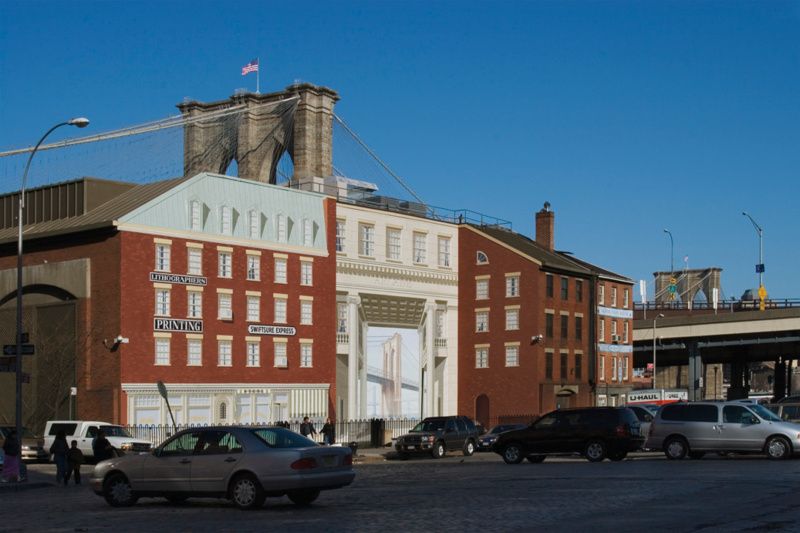
The murals of artist Richard Haas are stunningly realistic. Since the 1970s, Haas has created hundreds of trompe-l’oeil murals in cities across the world, from Boston to Chicago, and Miami to Munich. Meaning “trick of the eye” in French, Haas’ trompe-l’oeil masterpieces cover multi-story facades of buildings. These large-scale works appear three-dimensional and life-like, depicting scenes and buildings that the viewer feels they can step right into. Right here in New York City, we have five exterior Richard Haas murals to be mesmerized by. Haas has also done stunning interior murals including inside the DeWitt Wallace Periodical Room at the New York Public Library on 42nd Street. He continues to create smaller-scale paintings and drawings. We talked with the Manhattan-based artist and got his thoughts on his work in New York City, read on to discover where you can see them!
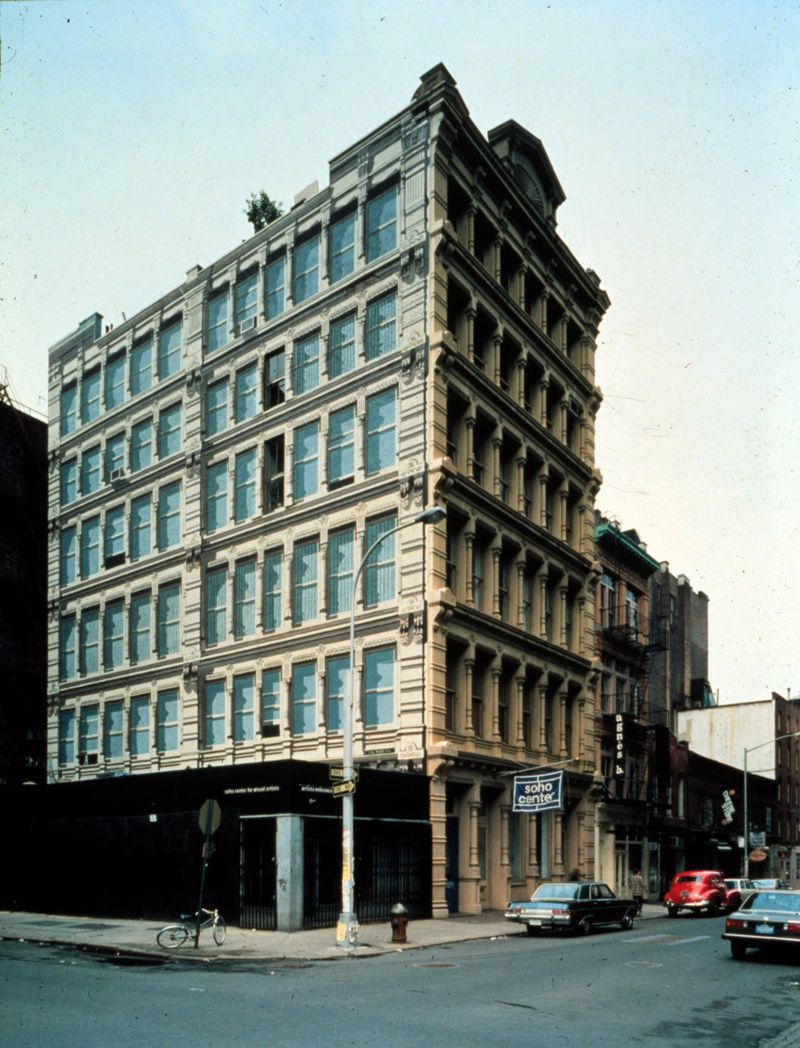
The very first outdoor mural Haas created appeared on the facade of 112 Prince Street in Manhattan’s SoHo Cast Iron Historic District in 1974. The mural depicts a faux cast-iron facade that mirrors the front of the building and its neighbors. It was commissioned by Citywalls, Inc. and the physical painting of the mural was done by a sign-painting company called Van Wagner Outdoor Advertising. Two real windows on the side of the building were worked into the design and he also added a personal touch by adding a black cat in one of the painted windows.
This first mural kickstarted Haas’ career in public art. After this initial piece, he would go on to create hundreds of murals around the globe. In a 1976 New York Times article, architecture critic Ada Lousie Huxtable said that the mural “turned the bleak, dingy brick side of a castiron-fronted landmark building on Prince Street in Manhattan into a trompe l’oeil triumph.” Over the past four decades, however, weather and vandals have taken a toll on the artwork. While the elements have worn away the paint on the upper levels of the five-story mural, graffiti covers the lower levels. In an effort to raise funds to have the mural repainted, Haas started the Prince Street Mural Fund sponsored by CITYarts. If you wish to make a contribution to CITYarts for the Haas mural, please be sure to note that it is for the Prince Street Mural project.
“Like any artist or architect who puts art in a ‘real’ space, one has to accept the temporal nature of such work. I cannot judge if I have been more or less fortunate than others in this endeavor, however, I can say I feel fortunate that in some cases clients, foundations, or agencies have chosen to do high-quality conservation and repainting of some of the murals,” Haas told Untapped New York, “Each one of these works that have not yet been restored is a great challenge, both to me and to the owners. Quality restorations have been done in Boston, Cincinnati, Portland, Oregon, Fort Worth, Texas, and the Con Ed substation.”

One of Richard Haas’ most enduring murals appears on the Con Edison Substation building on Peck Slip at the South Street Seaport. The mural, which was created in 1978, is located just south of the Brooklyn Bridge. In this large-scale piece, Haas pays homage to the Federal style architecture of the historic buildings in the area. Half of the wall is painted in that style, with signs that advertise a printing business.
The other half of the wall depicts a more elaborate form of architecture. Next to the painted brick building is a painting of a limestone arcade. Through the painted opening, passersby can see Haas’ depiction of the Brooklyn Bridge, the Manhattan Bridge, and the Williamsburg Bridge further out. Since this mural has been so well preserved, it is Haas’ favorite in the city.
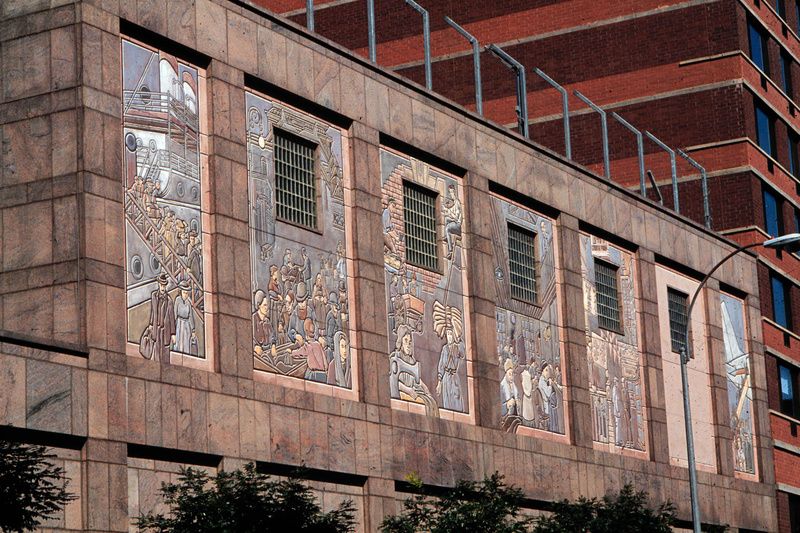
Since Haas’ murals are inextricably linked to the architecture of New York City, they are often threatened as much as any building in the way of development. One such threatened work is his mural on the Manhattan Detention Complex, also known as the Tombs, in Chinatown. The mural appears on the facade of the nearly windowless building that faces Baxter Street. The multi-paneled set of murals depicts immigrant life in the Lower East Side. The scenes show people filing off of a ship, performing various manual labor tasks, and taking part in other everyday activities.
In 2021 when it was announced that the Tombs would be demolished, Haas and artist Kit-Yin Snyder – who has a sculpture on top of the building – filed a lawsuit to protect their work. Though the suit had strong support from the local community, the artists ultimately lost. Haas’ murals, which he says were the most challenging of all his New York City pieces, are fated to go down with the building. “It took 7 years and a painted panel had to be redone to satisfy the community. The horror of the destruction has added to the strife,” Haas says. There are ongoing efforts to stop the demolition of the current jail facilities to make way for a new “mega jail” tower.
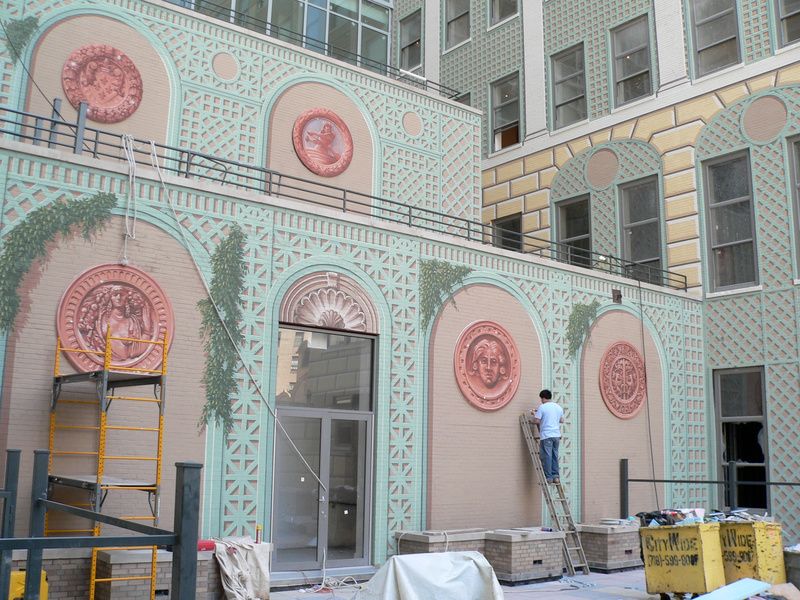
One of the largest Richard Haas murals in New York City can be found at 110 Livingston Street, a McKim, Mead, and White in Downtown Brooklyn. The building was originally constructed in 1926 to serve as an Elks Lodge and it once served as the New York City Board of Education headquarters. It was converted into condominiums by Two Trees Management in the early 2000s.
Haas was commissioned to create a grand mural in 2007. His painting stretches over 12 stories and covers the walls which face the courtyard. Haas took inspiration for the mural from the ornamentation of the historic building’s facade. In his work, you’ll see faux cornices, columns, and sculptural figures that sit amongst a swath of blue trellises adorned with flowing green ivy.
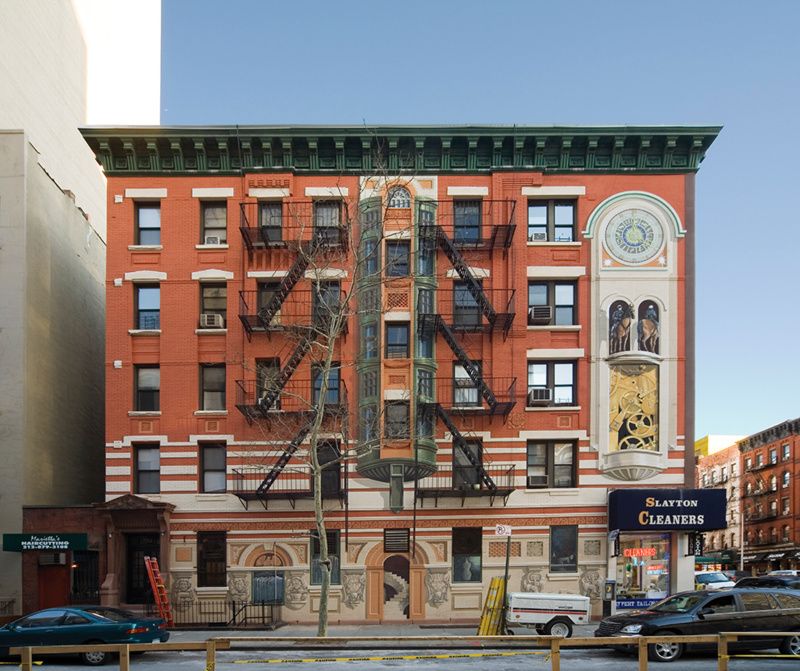
Haas’ mural on East 83rd Street in Yorkville, titled Glockenspiel, was the solution to a dispute between building owners. Residents in the apartment building The Cielo sent in complaints saying that the side of the building across the street was an eyesore. To remedy this issue, Haas was commissioned to create a 77-foot-wide mural to make the building more visually appealing.
The inspiration for this mural, as is the case for most Richard Hass murals, came up from the history of the area. This part of Manhattan used to have a large German population. The mural, created in 2005, shows the inner workings of a clock, like the famous Glockenspiel at New Town Hall in Munich. With hands that never move off of 4 p.m., the clock features a pair of mounted New York City police officers that you can imagine making the rounds as the gears turn. The police officers stand in for traditional figures you might expect to see on a German clock, a small but impactful way Haas has personalized the work to its geographic location. “The work is always carefully thought out and never just an approach of painting on window boxes or putting in random architectural details or cute animals,” Haas said. His intention is to “put information and subject matter out that will hold the attention of people who see the murals frequently” and he hopes that viewers will make new discoveries of references he has included each time they pass by.
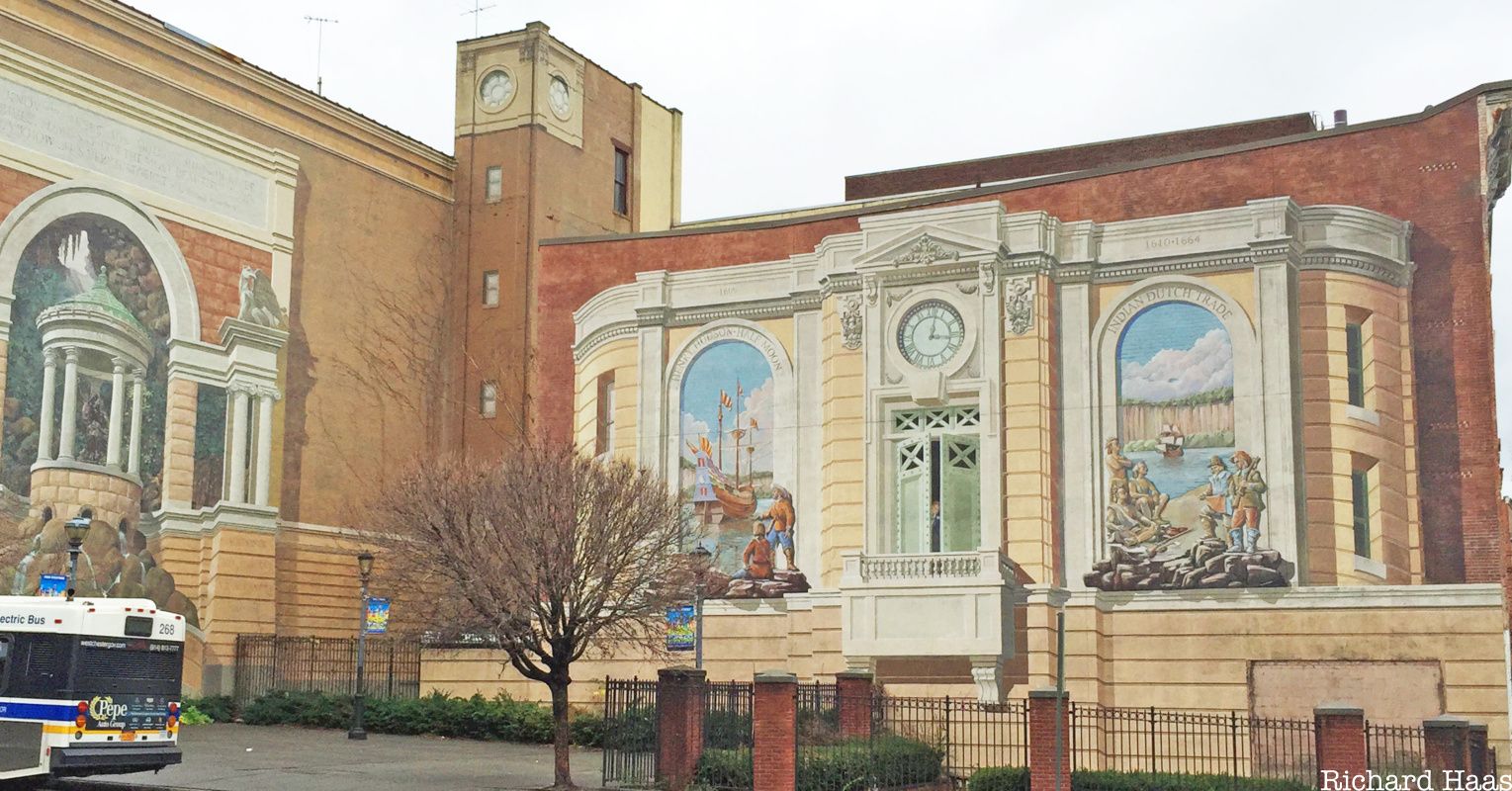
Just outside of New York City, you’ll find what’s left of Haas’ Gateway to the Waterfront murals in downtown Yonkers. Commissioned by the city of Yonkers in 1997, the three-part mural depicted semi-imagined visions of Yonkers’ 378-year history. Two of the original three murals have since been demolished along with the budlings they were attached to, and the final mural is endangered.
“Some murals have a little mystery in them,” Haas revealed, for example, the man peaking out of the door of city hall in this Yonkers mural was Dutch Schultz, a bootlegger who had a storied history in the city of Yonkers. “Legend has it that during prohibition he ran beer through the culverts in the city. Often there are discoveries of this sort to be made within the murals. Another one in Philadelphia shows a man rowing a scull taken from a Charles Eakins painting.” Read more about the Yonkers murals here!
Next, check out A Lost Modernist Mural Returned to the MetLife Building and The Keith Haring Mural Inside Woodhull Hospital
Subscribe to our newsletter